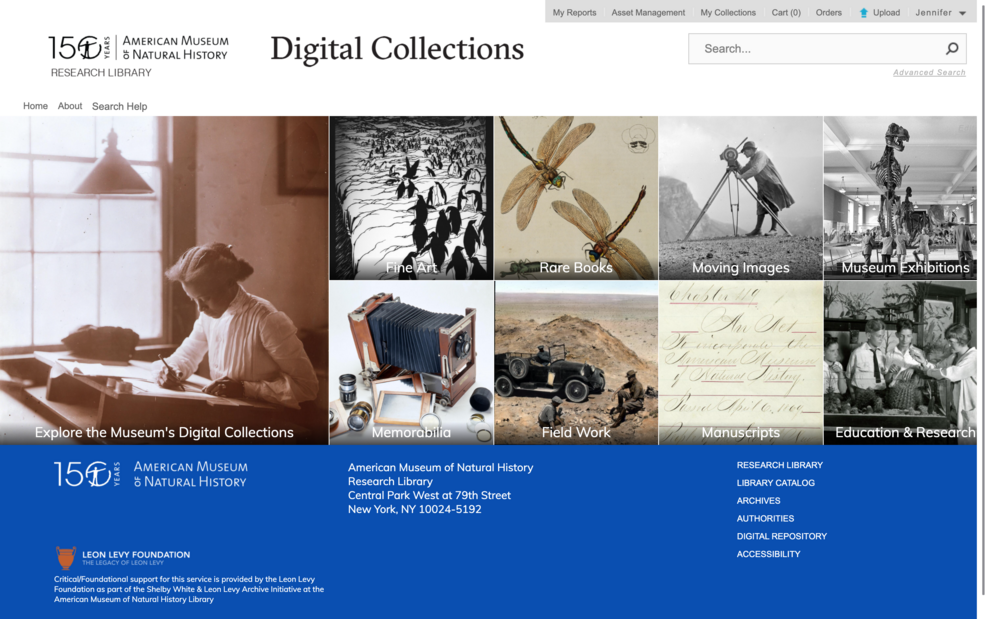“Hot links” have given way to the semantic web and hashtags. The Internet touches all corners of modern life and we can get lost for hours exploring any given topic, however, evaluating the content for accuracy is another matter altogether. The AMNH Library finds itself ideally situated for creating authorized terms, descriptions and timelines reliably documenting the Museum’s history using primary resources exclusively from the Library’s Archives.
The Museum’s story is spoken through the language of its expeditions, exhibitions, and the dedicated individuals who make it all possible. Through the implementation of the Museum’s Digital Asset Management System (DAMS), an arm of the Shelby White & Leon Levy Archive initiative, I have gained a keen understanding for how the standardization of expedition, exhibition, department, and individual names lays a foundation for effectively creating a common language from which the entire institution benefits.
Within the DAMS, authorities for expeditions, disciplines, exhibitions, and creator names are utilized as facets for limiting search and connecting assets. These authorized names are also used to connect assets to relevant analog collections described in ArchiveSpace, the Library’s Archival Collections Management System, and to authority records in xEAC, the Library’s application for creating and managing EAC-CPF (Encoded Archival Context - Corporate bodies, Persons and Families) records.
My perspective on the importance of standardization and authority work has also benefited from migrating legacy websites to the Museum-wide CMS (Content Management System) as Research Guides. These websites were created decades ago, just as digitization transformed how cultural heritage institutions provide access to their collections. These early websites demonstrate a vision for collocating disparate resources for a particular expedition, offering the user a single-point of access to images, manuscripts, publications, archives, and scientific collections.
The advantage for migrating the websites that characterized the early days of digitization projects to the Museum’s current CMS (Content Management System) is transforming a static resource into a resource that is up-to-date with all of the currently available information pertaining to the topic. This is dependent on linking within the Research Guides to the DAMS, ArchiveSpace, xEAC, DSpace (the Library’s digital document and data repository) and the bibliographic Catalog, which all hinge upon our authority work to connect to each other.
The Library is committed to analyzing and refining our applications to enhance the research experience of our users. We have established an ideal of “taxonomy as a service” and strive to implement our authorities in an elegant way, making them easy to adopt and use. The support of the Levy Archive Initiative takes this work to the next level at a pivotal point in the Library’s trajectory.
This is the nineteenth post in a series about how the Library's staff is working remotely and enriching its digital collections to enhance access to researchers and the public during the COVID-19 pandemic. This entry was written by Jennifer Cwiok, Digital Systems Librarian.
